“A FISTFUL OF SHRIMPS”
The vanishing of villages, the rise of aquaculture and the future of mangroves ecosystems

Mangroves are a thin belt between land and sea in tropical territories. They are rare. They cover less than 0.4% of the total forests globally.
They are disappearing, rapidly.
Because mangroves are sparse their loss has been ignored. 1/3 of mangroves have disappeared in the last 50 years. Mangroves are waning 3 to 5 times faster than all other forests in the world. This loss will have an impact. In fact, it is having an impact.
A natural protection
Mangroves protect coasts from erosion, floods, hurricanes, moderate tsunamis. Fishermen harvest shrimps, eels, crabs, and a variety of fish species that need mangrove ecosystems as spawning or breeding ground. Mangroves provide both income and food for hundreds thousands families around the world.
Way Kambas National Park, Lampung Province, Sumatra, Indonesia, 2016.

Despite their scarcity, mangroves store enormous quantities of CO2. They could store up to 20 billions tonnes of carbon. Which is released to the atmosphere through deforestation. As cutting of mangroves proceed, CO2 continues to be emitted. Unfortunately, deforestation is expected to spiral, as global trade of farmed shrimp from South East Asia region is predicted to triple.
Mangroves are sacrificed to give room to shrimps industry, palm oil, urbanization.
“I am afraid within the next 50 years all mangroves forests could be gone”, says Daniel Murdiyarso, senior scientist at the Center for International Forestry Research (CIFOR).
They are crucial for protection, food security, of coastal communities in the tropics.
We met fishermen, experts, from Indonesia to Europe to hear stories of impacts, challenges of recovering, and solutions they suggest to halt a largely ongoing disaster.
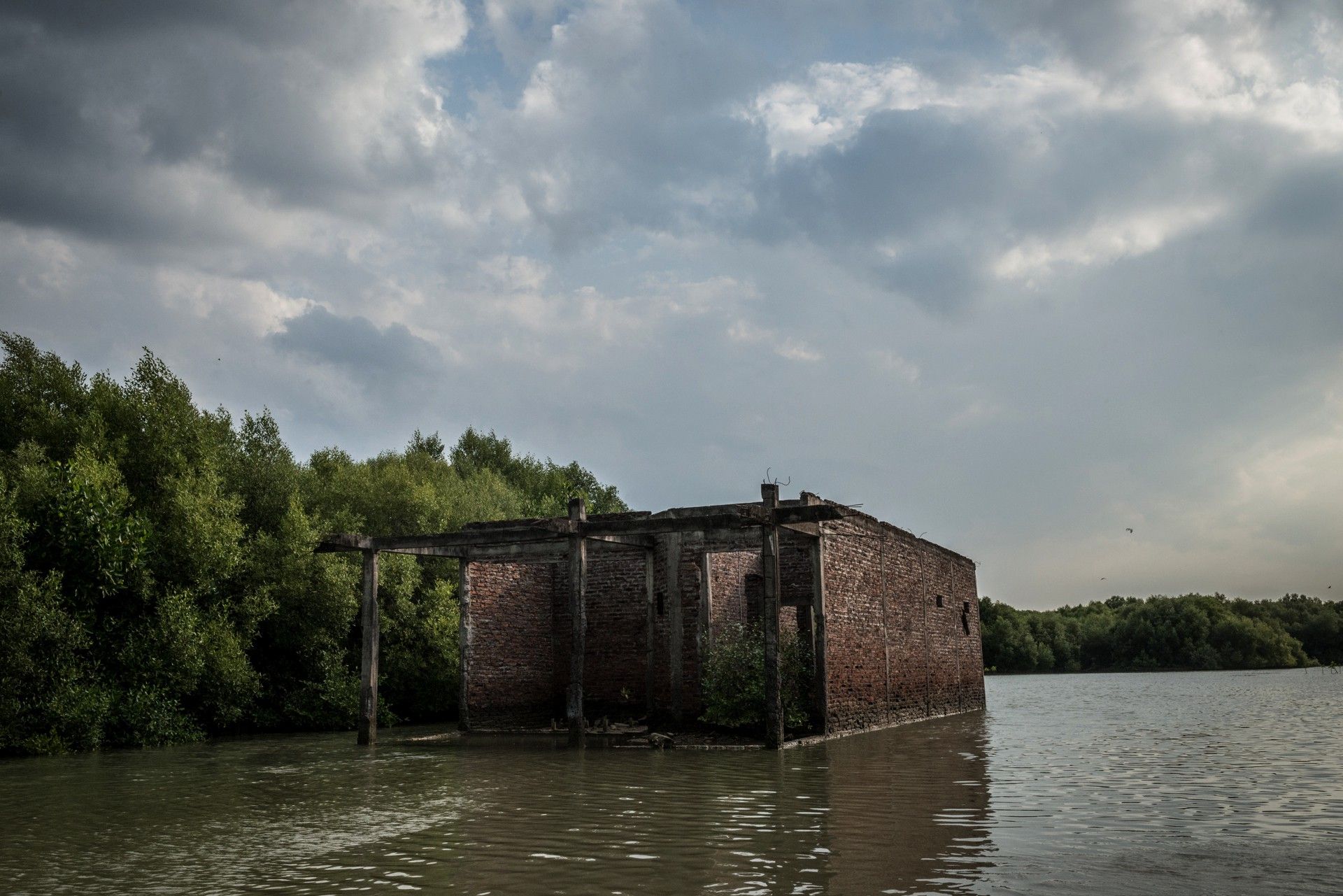
Sinking ruins
The story of Bedono, the ghost village, submerged after clear cutting of mangroves
In less than a decade the ocean erased the Bedono village from maps and satellite images.
The soft sediments subsided under excessive groundwater extraction, clear cut of mangroves, and sea level rising. The sea submerged fishponds, roads, houses.
In the past 3 decades new room was made to fishponds expansion, urban development. Modification of natural environment left the land and the villages to the mercy of sea currents, waves, tides, subsidence.
Years 2003 to 2015, the fading village
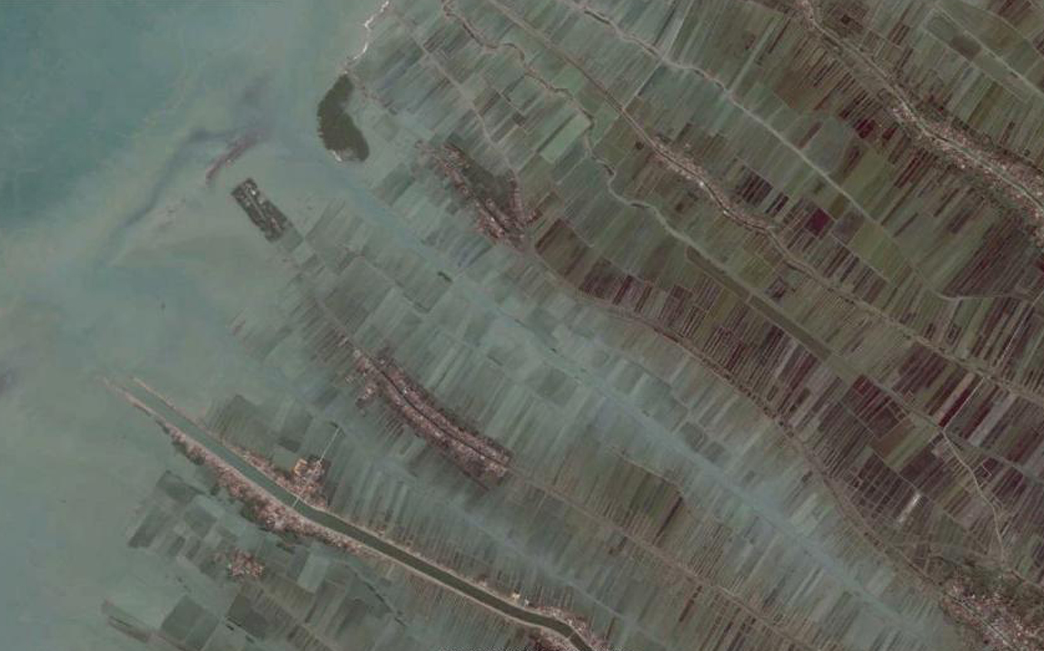
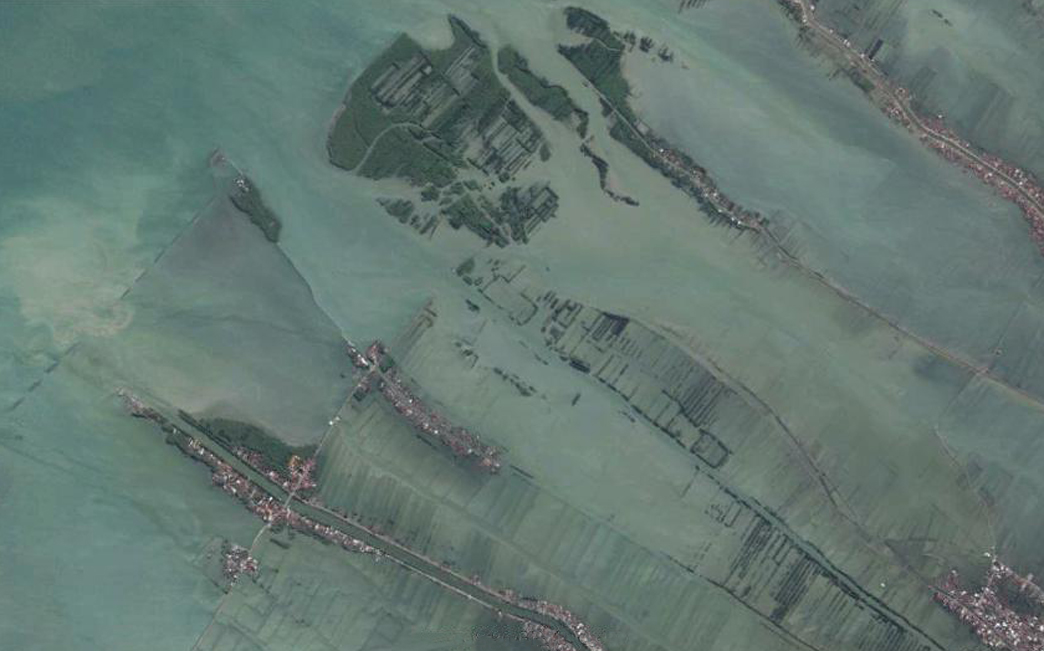
A Google Earth image of year 2003 shows hundreds of fishponds, and a tiny relic of a once huge mangrove forest. In 2015 the ocean has claimed hectares of land, it submerged fishponds and infrastructures. The forest is growing but will probably never reach its ancient extension because the sea level is too high to allow mangroves to expand. On the ruins of the village the forest recovered.
Mangroves in Bedono could once trap sediments, protecting the coast from erosion and floods. They could actually build land and act as a natural barrier to the action of the sea. Today the coastline has shifted 1.5 km landward. Almost 700 hectares of fishponds and homes have been lost to the sea. Rice fields and towns inland are now prone to floods. Saline water intrusion threatens crops and the remaining pond farms.
Bedono is not an exception, similar stories are being heard from more and more villages along the coasts of Java.
She did not leave the village
Pasijah and her family is one the two families still living in Bedono village. Semarang, Java, Indonesia, 2016

Pasijah still lives in this partly submerged land. She is one of the two only villagers who did not abandon the sinking village. The ground sinks, the sea level is rising, but she is not going to move.
She had to rise her home of about half a meter, to keep up with rising waters.
“I hope I don’t have to move somewhere. I want to stay here”, she says. Her roots reach deep as those of the mangrove who are invading her home’s surroundings. She built a business as fish collector. Fishermen bring their catches, she collects the catch, reaches by boat the closest village, and sells fish and shrimps to the local market. It’s a life of solitude, but business is going well. Fishermen need her support in collecting and selling the daily catch.
In some areas around her home mangroves are growing again. Question is if they will keep up with the speeding pace of sea level rise and land subsidence.
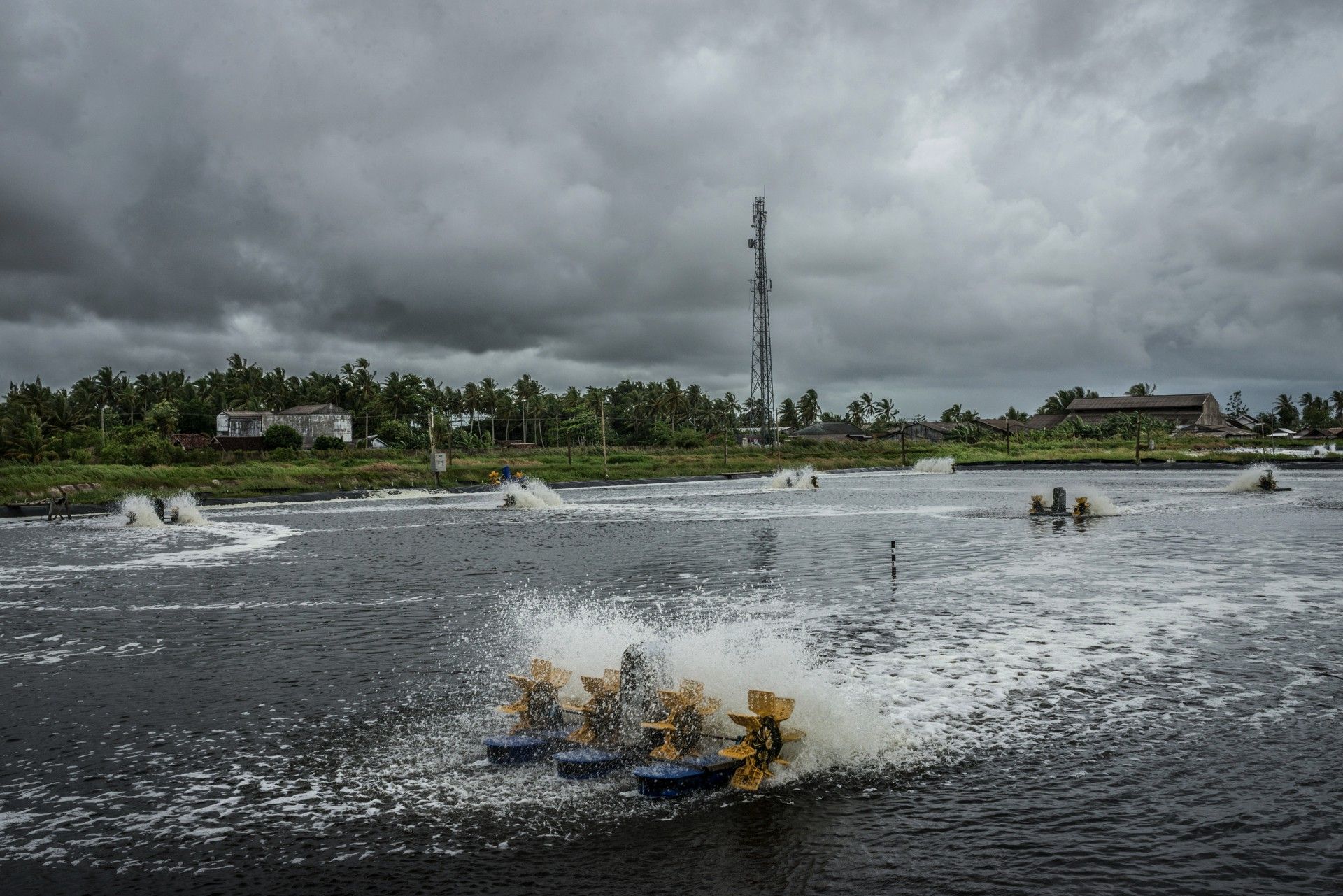
Intensive farm, intensive deforestation
How small-holders and huge industrial farming are shaping tropical coasts
Four wheels turn swiftly in the 300 square meters wide pond. The wheels add oxygen to the water. In such environment shrimps grow big and fast. To boost production farmers feed shrimps with artificial fertilizers.
It is a typical intensive farming. Ponds are usually under an hectare of surface, but produce per hectare ten to hundred times more shrimps compared to extensive, traditional, ponds. A productive concrete pond may produce up to 20 tons shrimps in a year.
Compared with traditional farming, this system requires substantial investments. Most fishermen can’t afford this technique and do a living with a much cheaper semi-intensive farming.
For a fistful of shrimps
Mr. Kasrudin, 36, shrimp farmer of the coastal village of Sawah Luhur, holds in his fist a handful of shrimps freshly caught. For how long will his business last? Banten, Java, Indonesia, 2016

Hasan Abdullah, for example, cares of 7 ponds over 2 hectares. He does it in a semi-intensive fashion.
He relies on tides to let fry, shrimps and fishes into the ponds, as in the traditional way. He often kills fish with chemicals produced in China and Japan. It makes him easier to harvest the fish, and it does not kill the shrimps. He also cleared the land of mangroves, to speed up harvesting process.
Unfortunately this system leaves behind polluted sterile lands and waters. Traveling along the coasts of Java it appears clearly that this is the most common sort of farm system. Poorly, if at all, regulated.
As with nearly all farmers, the ponds belong to some owner, who lives in the nearby town. While speaking with Abdullah, we wonder if the fish may be contaminated by chemicals. “I don’t care, I eat the fish, not the chemicals”, he says.
Industrial, intensive farms are big things. The vast CP Prima industry in Lampung, Sumatra, is huge. It outpaces Habdullah’s and all small-holders farms in Java.
“Our ponds cover 3500 hectares, we own more than 10000 ponds”, says Arianto Yohan. He is Director of Food Processing Division in CP Prima. They import on almost all European countries, in US, and Japan. It is the largest seafood factory in Indonesia. Their ponds cover an area larger than half of Manhattan.
Since few years CP Prima can display Aquaculture Stewardship Council and GlobalGap certifications, on their products. These are unique environmental sustainability and social responsibility certification in place. Unfortunately only few, large, industries may comply to certification requirements in Indonesia. In Europe, sustainability certification is becoming a must, if you want to be in the market, Arianto admits. It is mostly required because of pressures from retailers and consumers, rather than from institutions.
Focusing on domestic market, however, realty looks different. The high standards required to access the European and US markets are not a must, not in food security, nor in environmental or social sustainability. Sustainability within the domestic market is a loose concept.
Yet, domestic market is flourishing. Growing economy means more people has access a protein-rich diet and international organization suggest increasing fish-proteins intake. Currently 40% of the shrimps in Indonesia are produced for domestic market. As the market grows, industry sees potential to expand as well.
“There is still much coast line, in Sumatra, Kalimantan, and some pockets in Java, where we could expand our operation”, says Arianto Yohan. Speaking of coastland, you speak of mangrove ecosystems.
Sustainability within the domestic market is a loose concept.
Currently there are recent norms preventing new concessions on mangrove areas, the government has lifted the bar for forest conservation. In 2012 the Indonesian government declared the National Strategy for Mangrove Ecosystem Management (SNPEM).
Unfortunately experts warn that it did not properly included the major causes of mangroves’ loss: brackish water shrimp farming and palm oil plantation. Anyway, would mangroves deforestation be properly dealt with in conservation policies, there are plans to deregulate new areas to aquaculture expansion.
A business-as-usual policy will lead to the depletion of 700000 hectares of mangroves within the next two decades, scientists say.
Penaeus Vannamei
Penaeus Vannamei (white legs shrimp) is a tropical species of shrimp commonly farmed in South East Asia and Central America, together with Penaeus Monodon (tiger shrimp). Indonesia, 2016

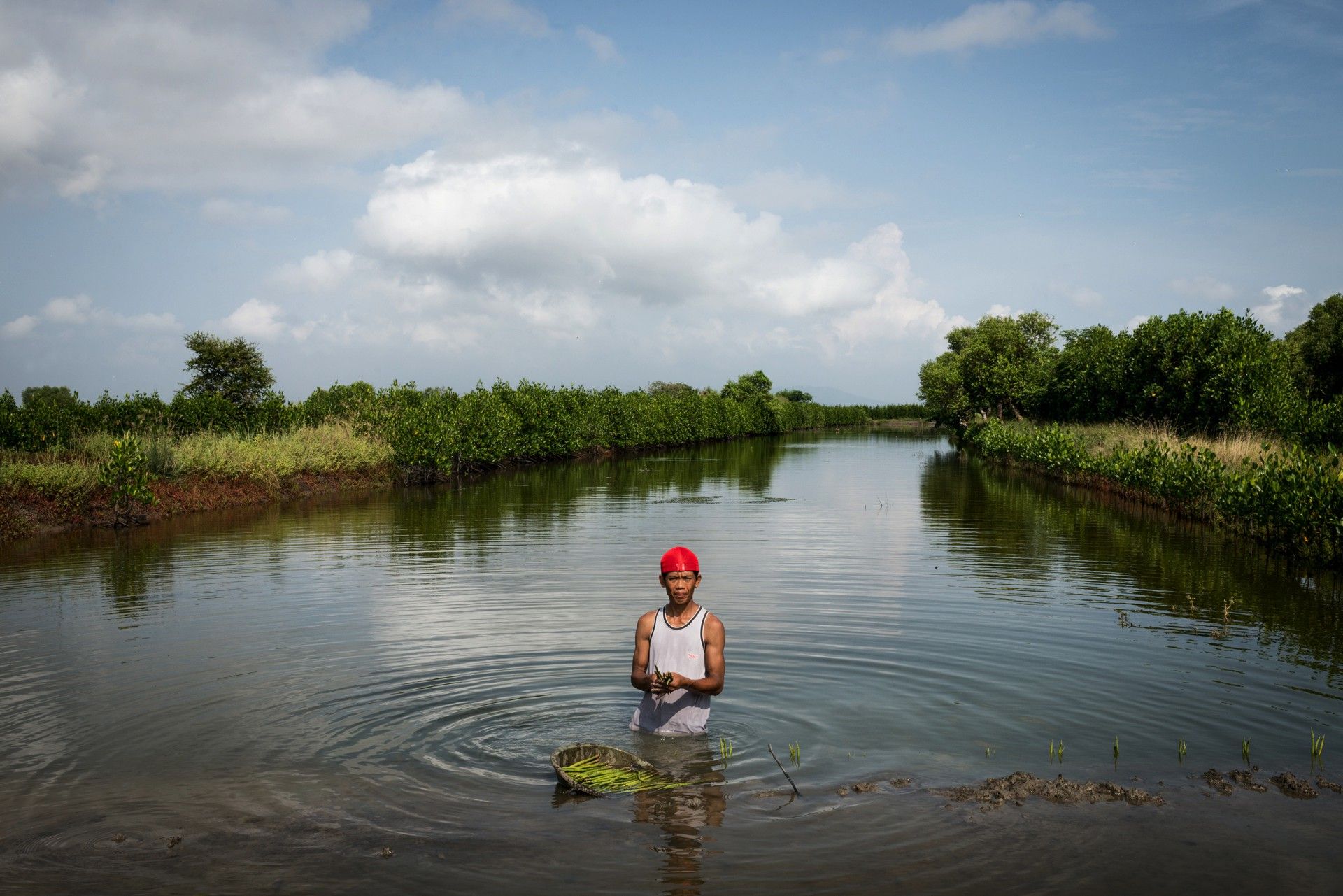
The Wanamina solution
Farmers have a solution: keeping mangroves, saving coasts and ecosystems
The tropical sun bites the low-lying coast around Banten, in western Java. During the day no fishermen are at work. If it wasn’t for the ponds, you would call this a desert.
Fish and shrimps grieve in their ponds. They are stressed, fishermen know this. Treeless ponds, treated with additives and chemicals boost production in semi-intensive farms. Harvest is good for or some years. Then their productivity drops, land and waters are contaminated, waters become poor in oxygen.
At Tapak, on the northern coast of central Java, is different. Villagers never cut down the local mangrove forest.
Shadow, safety
Old mangroves grow tall along the main channel in farming ponds areas in Tapak village. They supply natural nutrients, high biodiversity. Semarang, Java, Indonesia, 2016

By Muhammad Arifin and the members of Prenjak Tapak association, channels are covered by a dense mangroves canopy. Some plants are more than 30 years old. Both dikes and the ponds are shadowy.
People in the village understand the benefits of preserving traditional farming. They will defend this area from industrial or urban development. Fishermen can catch fishes, shrimps, and crabs. True, they cannot compete with intensive farms, in fact, they don’t. Yet, it is sustainable, when compared to semi-intensive farm run by small-holders. Semi-intensive farming is proving to be not effective on a long term, just devastating for the environment.
“Here in Tapak even though the ponds are old, almost fifty years old, the farm still brings profit”, Says Arifin.
“The society needs to know: mangroves are helpful for coastal area farming”, he says.
The mangrove carers
Arifin, 29, is president of “Prenjak” community for the protection of mangroves in the coastal village of Tapak. Behind him, Aris, 20, is responsible for relations with foreign media and Nur, 21, is the treasurer. Semarang, Java, Indonesia, 2016

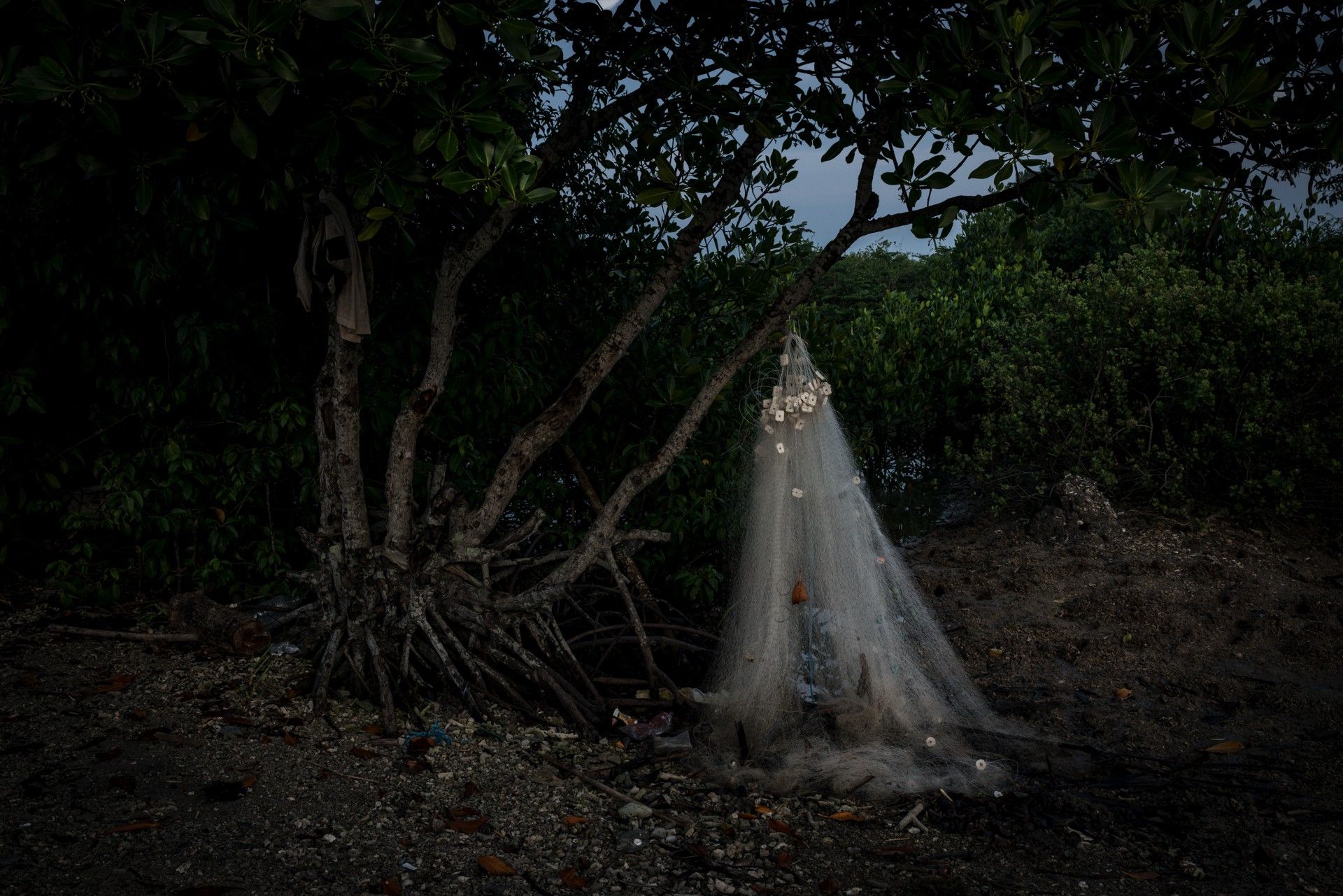
A blue revolution, a green loss?
The fast pace and the global impact of mangroves deforestation
Java exhibit probably the most deforested coastline in the world, it has lost at least 70% of original mangrove forests. Globally, Indonesia is leading deforestation of mangroves. Until a century ago coastlines of Indonesia were crowned by 4.2 million hectares of mangrove forests. Today they are about 3 million hectares. In the last three decades, deforestation surged. Mangrove areas are disappearing at the rate of approximately 1% per year globally, with estimates as high as 2–8% per year in Indonesia.
40% of this loss is due to the blue revolution: The booming of aquaculture. The deforestation rate is likely to spiral up in the next decades as the global demand for farmed shrimp is expected to triple.
Without the green belt of mangroves, sea level rise is a threat to local communities.
The economy grows and more people have access to a once precious seafood. Economic growth may come at expenses of the poorest. They are the most exposed to loss of local resources. Climate and environmental hazards increase.
Nyoman Suryadiputra, Head of Wetlands International Indonesia Program, says: “Without the green belt of mangroves, sea level rise is a threat to local communities. Erosion is not the only threat to coastal populations, saline water is intruding inland affecting water in the wells”. Buildings too, begin to be corroded by salty waters.
Most fishermen need healthy mangroves as they can only afford near-coast fishing. Without mangroves, sterile coasts lead to the collapse of coastal fisheries.
Muddy waters
Mr. Timan, 53, farmer of Sawah Luhur village, hand-digs the mud in a tambak. He builds a new bank. Widespread poverty and low level of mechanization have left only the hands-work of men to modify the land. Banter, Java, Indonesia, 2016.

Since Presidential Decree 32/1990 Indonesia has regulations to protect the coasts.
In fact, corruption and illegality contribute to mangrove loss. Would illegality not be enough, there is room for deregulation. Aiming to attract new investors and lift production, Minister Susi Pudjiastuti of Minister of Maritime Affairs and Fisheries plans to open currently regulated areas to fish industry.
Indonesia is at a crossroads. It may continue to cut the mangroves pushing today’s economy. This will lead to 190 million tons of CO2 released in the atmosphere. It is the equivalent of emissions of 40 million passenger cars.
Indonesia could, instead, stop clear cutting. Simply ending this practice would bring immediate benefits. Halting deforestation of mangroves accounts for 26% of the emissions reduction Indonesia committed to achieve by 2020 according to international agreements. In fact, experts say that leaving mangroves is a cheap solution to substantially reduce CO2 emissions.
The depletion of mangroves is a worldwide disaster, from Asia to the Americas. The planet has lost more than 1/4 of original mangroves in less than 50 years. At current deforestation rate what’s left could be gone by the end of this century.
Saving mangroves from deforestation may generate 6 to 24 billions US dollars in carbon storage worldwide.
“In Indonesia, benefits of keeping and restoring degraded mangroves would be around 2 billions dollars per year”, says Daniel Murdiyarso, senior scientist at the Center for International Forestry Research (CIFOR). Policy makers plan to incorporate mangrove-specific targets into the post-2015 UN Sustainable Development Goals agenda.
Experts' concern
Indonesian Professor Daniel Murdiyarso is world leading expert on mangroves ecosystems and the Scientific Director of the International Centre of Forestry (CIFOR) in Bogor, Java. He estimated that the carbon emissions associated to the production of 100g of tropical shrimps are more or less of 1000 tons of CO2. Bogor, Java, Indonesia, 2016.

Mangrove forests cover just about 137,000 km2. Not much, compared to 40 million square kilometers of the world’s forests. Growing in marshy areas, and due to their biology, mangroves are exceptional in sequestration of atmospheric CO2. Per hectare they retain up to 5 times more CO2 than rainforests. In other words, the emissions from 1 hectare of mangroves converted to aquaculture correspond to the emissions of 5 hectares of tropical forest clear cut for agriculture or other uses.
Mangroves account for less than 1% of global forests. Yet, they contribute 10% of global emissions for deforestation.


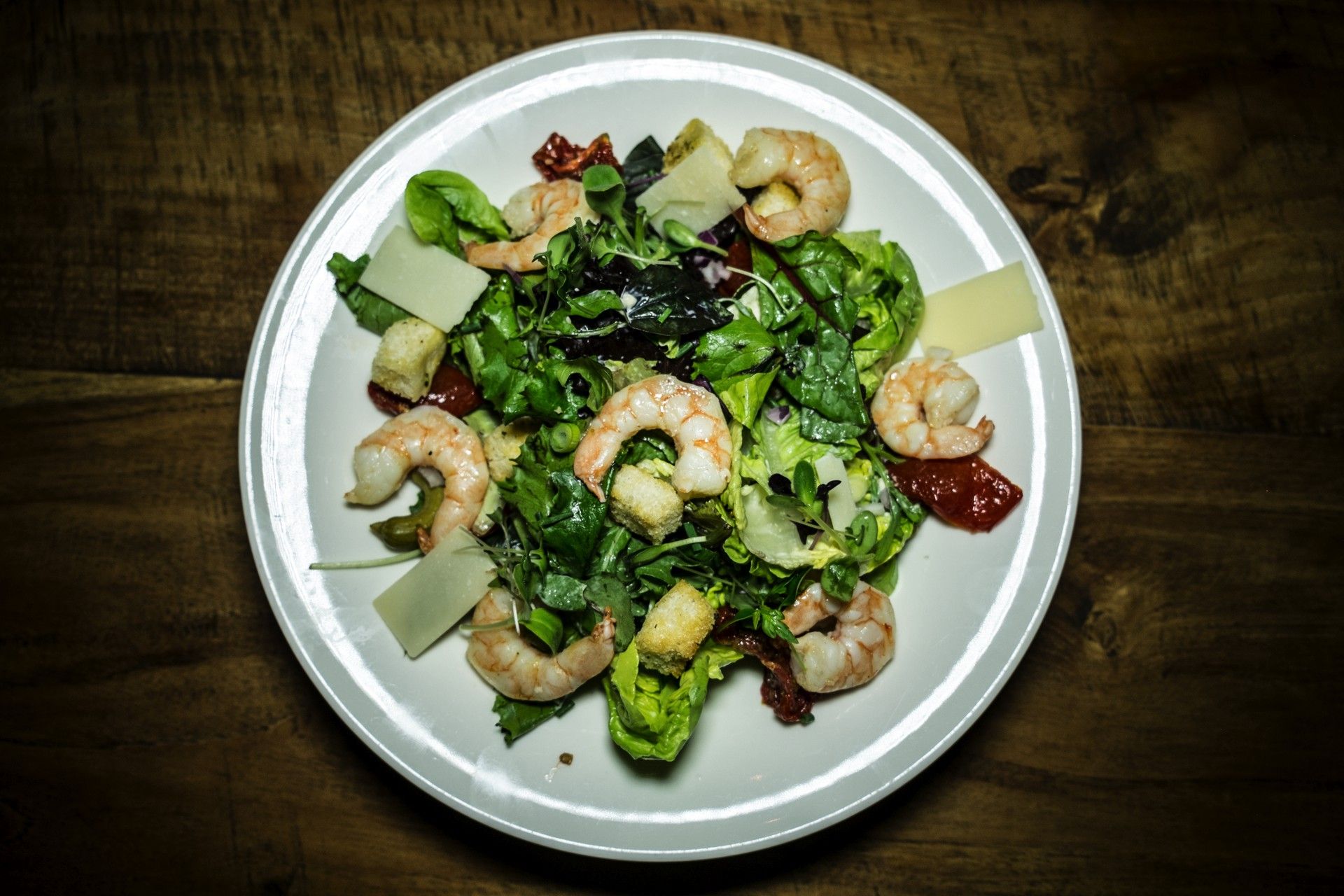
Our appetite, our market, our responsibility
Global demand for fish is growing steadily. Aquaculture is getting a larger share of this market.
Worldwide aquaculture produced about 16 thousands tons in 1972. It became 66 millions tons by 2014. Fisheries, instead, are stable or decreasing.
By 2030 aquaculture production could overcome captured fish. Shrimp farming is skyrocketing.
“While quantities increase, the labor costs become cheaper”, says Tiziano Scovacricchi, Institute of Marine Science – National Research Council. Twenty years ago there were almost no tropical shrimps on a European table. “The final product, once something special, is now cheap too”, he says.

A fistful of shrimps on your dish
A fistful of boiled tropical shrimps in an Italian kitchen. The impact, in terms of quantity of carbon dioxide produced to raise 100g of Penaeus Vannamei species in Indonesia, has been estimated equivalent to 1000 tons of CO2. This calculation does not consider the impact of packaging and transport to the European tables. Italy, 2016

The European Union has stringent rules on safety of imported seafood. Granted, what you get in your dish at the dine restaurant at the corner is safe. It will be safe from pesticides, fertilizers, antibiotics. Before it gets to your mouth imported seafood has been controlled several steps. There are European certified officers, vets, biologists, to do this for your assurance. From the farm, to the shop shelf, your seafood is controlled to be safe. And, admittedly, is increasingly cheap.
For your security
The vet of Milan Fishery Market, Dott. Valerio Ranghieri, carries out a daily sanitary inspection on fish products. Italy, 2016

Cheap production and quality do rarely match with sustainability. In short, your shrimp salad may be safe, clear of toxic contaminants, but it may not be sustainably produced. Controls are in place for hygiene of imported seafood. There are no rules in terms of their ecological and social sustainability.
Saša Raicevich of the Italian National Institute for Environmental Protection and Research in Chioggia (Italy) says: “Imported products are controlled for safety and hygiene, but not for ecological and social sustainability.”
Xavier Guillou, of General Directorate for Maritime Affairs and Fisheries (European Commission) admits that stringent rules are in place for food safety, but not for production sustainability.
In short, your shrimp salad may be safe, clear of toxic contaminants, but it may not be sustainably produced.
Responding to consumer increasing awareness, the European Commission, is working on this issue, he says. But today’s menu still includes unsustainable shrimps.
Your stomach is protected. The environment may not be protected. The labor force may not be protected. In fact, they are not.
Only certifications such as GlobalGap and ASC take into account sustainability. However, these are voluntary certifications. They are market-driven, in shrimp farming they have been only recently introduced.
Imported products are often price competitive. Domestic producers in Europe and US are required to achieve high sustainability standards. This has a cost, which echoes in the product price. Eventually it makes domestic farmers non-competitive in a global market. European producers succumb to the competitors from Asia and the Americas.
The whole process, from farming to distribution has been proven unsustainable. “Unsustainability has a negative social impact on resources on a long term”, says Raicevich. If resources are sustainably exploited, the catch will be stable over time. When over exploited, biomass decreases, and the cost for catching the same quantity of fish will increase, explains the expert.
Removing mangroves leads to the collapse of the coastal ecosystems in many tropical regions, it induces massive greenhouse gas emissions, it exposes coastal communities to unbearable threats.
Intensive aquaculture is still an unsustainable practice. Today shrimp farming is under scrutiny by civil society because of its social and environmental impacts. Driven by economic cues, mangroves deforestation is proceeding at unendurable pace, from Bangladesh to Brazil, Mexico and Indonesia, on virtually any tropical coastline. The impact of deforestation is affecting climatic and environmental variables such as coastal flooding, extreme weather events, water temperature and salinity, nutrients circulation. This is having dramatic effects on coastal communities as well as a global warming.
Removing mangroves leads to a collapse of the coastal ecosystem.
Mangroves are a key to increase resilience to climate change. The good news comes from fishermen, who are now suggesting solutions to halt deforestation without stopping aquaculture practices and preserving a wholesome habitat where hundreds of millions of humans are living.
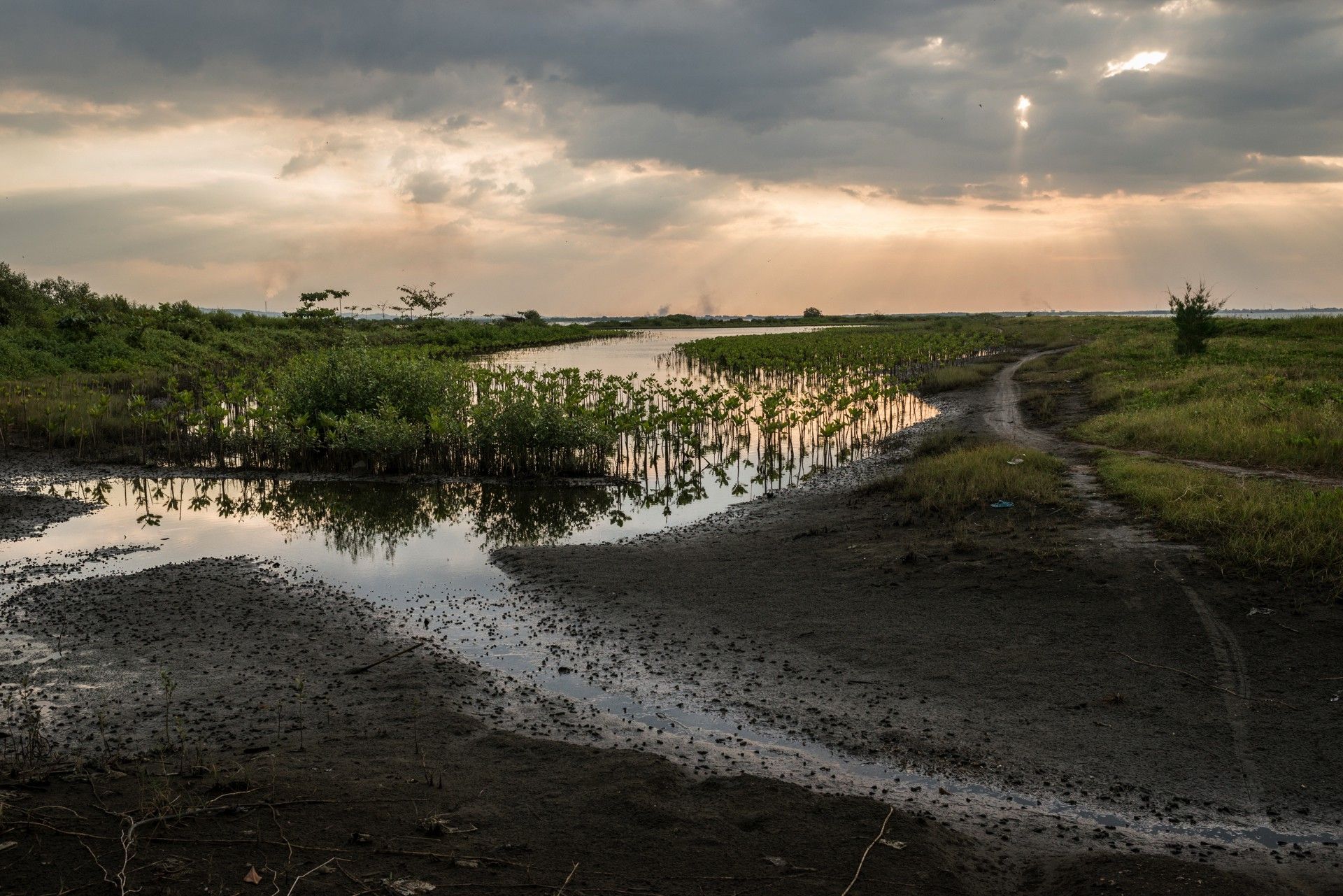
Produced by:
Jacopo Pasotti (@medjaco) – Research, texts, video
Elisabetta Zavoli (@elizavola) – Research, photo, video
Webdoc, design:
Alessandro D’Alfonso (16am.net)
Facebook: https://www.facebook.com/afistfulofshrimps/
Webpage: http://journalismgrants.org/projects/a-fistful-of-shrimps
With support images and footage from:
Ulet Ifansasti
Thanks to:
Wetlands International (Indonesia)
CIFOR (Indonesia)
ISMAR-CNR (Italy)
University of Wageningen (The Netherlands)
ISPRA (Italy)
This investigative report was conducted with the support of the “Innovation in Development Reporting Grant” program of the European Journalism Centre (EJC), financed by the Bill and Melinda Gates Foundation.